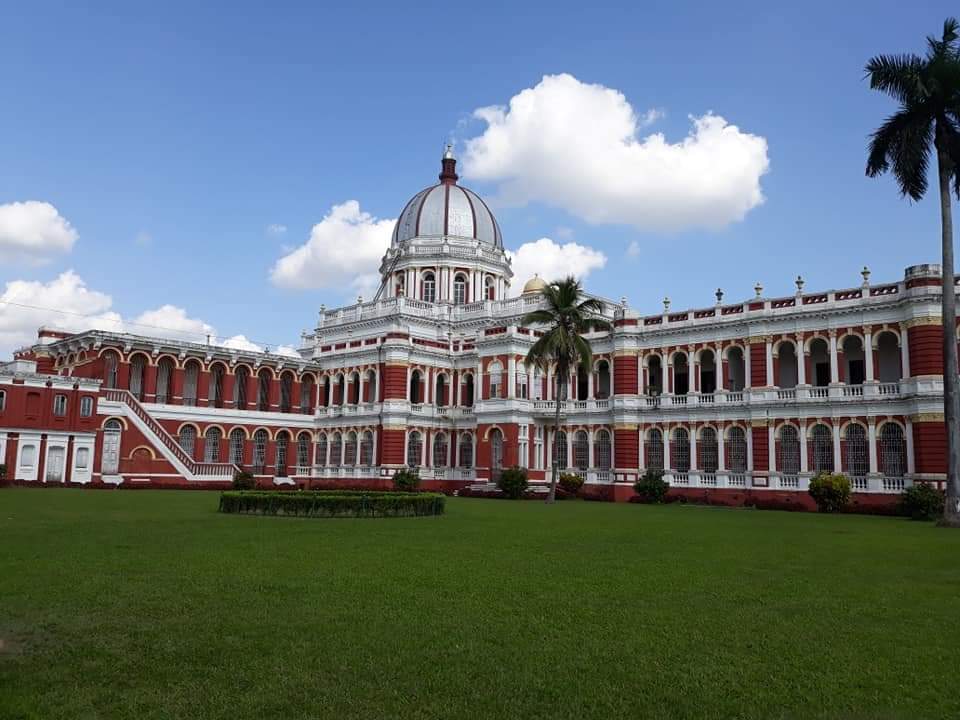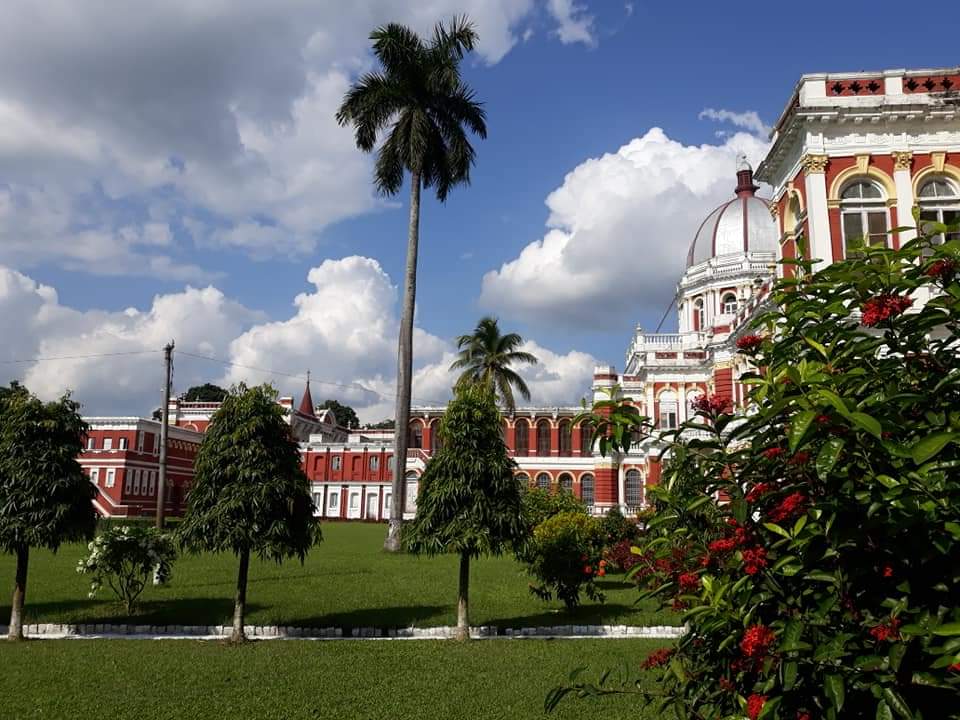Last November, quite on a whim , we went to Coochbehar. Tucked away in the northern part of Bengal, just where the beautiful forests of Alipurduars begins..The kingdom of Cooch Behar traces its origins to King Vishwa Singha of the Koch tribe, who defeated different tribes and laid the foundation for the Kamata kingdom ( then.part of ancient Kamrup)
This land of the Koch kings was named after the Koch Rajbongshi people
It was a day before Rash Purnima, the moon was magical and we had gone to see the Raash Festival at the Madan Mohun Jiu temple.
And Coochbehar town fascinated me.
Remnants of a bygone era.
The warmth of a place still a little shielded from the big city madness, yet at one time this used to be the seat of power of the Princely State worthy of 13 gun salutes.
Today the architectural splendor still remains.
The Jenkins Scool Building, the MJN Club, the Post Office building are spectacular architectural beauties, but nothing could have prepared me for marvellous structure of Coochbehar Palace
Miles and miles of verdant greens, manicured gardens filled with tall trees and joyous blooms and the sheer romance of arches, columns and facades~ Aweinspiring Magnificence!
The Victor Jubilee Palace or Coochbehar Rajbaari as it is commonly called was built in 1887 by Maharaja Nripendra Narayan Bhoop Bahadur. Maharaja Nripendra Narayan was an infant when he ascended the throne. Like many other fiefdoms in Bengal the administration was carried out by the British in the name of the King. Nripemdra was educated in England and largely influenced by Western liberal thoughts and practices.
Nripendra Narayan was married to Suniti Devi, the daughter of noted social reformer and founder of Brahmo Samaj, Keshub Chandra Sen
Nirpendra and Sunitidevi bought enlightenment and progressive values to Cooch Behar. They built schools for girls, hospitals, ashrams and law courts.
Considerably influenced by European thoughts the palace too was built was built in Italian renaissance style,. It had a huge Durbar Hall, Ballroom, Billiards room, a great library and around 18 bedrooms. Maharaja Nirpendra Narayan’s son Jitendra Narayan married Princess Indira, daughter of Maharaja Sayajirao Gaekwad of Baroda. Indira Devi was a great collector of fine art and furniture and the Cooch Behar palace became a symbol of fine taste across princely India.
However over time post the death of Maharaja Jagdeependraya Narayan , gradually the Palace fell prey to negligence and decay.. It was then taken over by the Archaeological Survey of India for repairs and maintenance. A small part of the Palace is now open for public viewing

As one pushes the tall teak doors and slivered door knobs to go into what once used to be the Durbar Hall, and stand under its central the with the Corinthian columns supporting the base of the cupola, one looks up.in awe.
One could easily be standing in a historic site in Europe
Equally magnificent is the wooden.stairway that takes you to the upper floor which used to be the living area of the Palace.
There are various halls in the palace and rooms that include the Dressing Room, Bed Room, Drawing Room, Dining Hall, Billiard hall, Library, Toshakhana, Ladies Gallery and Vestibules.
Painted frescos, remnants of objects from the past , coins, guns etc displayed for the visitor.
Statues and Portraits of the kings and queens look on. At the base of the stairs there is a picture of its famous daughter Maharani Gayatri Devi of Jaipur.


A home turned into an edifice, a museum.
The canons lie in front of the main porch
The sheer beauty of this elegant Palace leaves you both inspired and a little sad.
Inspirational that something so magnificent is there, right there so close to us.
Sad because this gorgeous historic landmark is quite unknown to anyone beyond the local lot.
As we walk away, I look back at the erstwhile home of the last few Koch Kings, realisng how ironic life can be.
A beautiful home built by a progressive king and yet so totally under the influence of the Colonial masters.
A home that once showcased the richness of Bengal, now fallen by the way, and yet opened to all who wish to visit it.
For history of the ruler is also history of its rules.
Heritage belongs to the people
The lion and elephant stands atop the columns
The Royal insignia reads
“Jato dharma, state jai”
” So long as there is dharma ( true justice) there will be victory”
May this and the rest of my beloved ancient land of India, this land of palaces and historicity forever be blessed with Dharma or true justice
Note~ All pictures taken by Ipsita Ganguli



Remarkable
Thank you so much Devinder di
Thanks for this very informative share.! Had read about the Cooch Behar family in Maharani Gayatri Devi’s memoirs wherein she writes about her life as a young princess living in this palace. God willing shall visit it some day! So much to see n explore!
Thank you so much Kadambari for your kind encouragement.
CoochBehar is definitely worth a visit